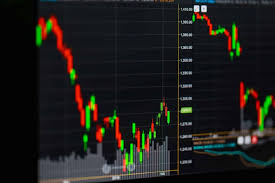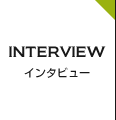

In the dynamic world of currency trading, finding the right forex trading platform Forex Brokers in Indonesia can significantly affect your trading success. Whether you are a novice trader or a seasoned investor, the importance of selecting a suitable forex trading platform cannot be understated. Understanding the various features and functionalities that different platforms offer is essential in navigating the forex market effectively.
Understanding Forex Trading Platforms
Forex trading platforms are software applications that allow traders to access the forex market. These platforms enable trading of currencies, provide tools for technical analysis, and allow traders to execute trades. The right platform can make your trading experience smoother and more profitable, while the wrong choice can lead to obstacles and inefficiencies. Here, we’ll cover the key aspects to consider when selecting a forex trading platform.
1. User Interface and Usability
The first aspect to consider is the platform’s user interface. A user-friendly interface is crucial, particularly for beginners. The platform’s layout should be intuitive, allowing you to navigate it with ease. Efficient access to trading tools, charts, and market data is essential for making informed trading decisions. Remember that even the most powerful tools are of little use if you can’t find or utilize them quickly.
2. Trading Tools and Features
Different platforms come equipped with various trading tools, and the right combination can greatly enhance your trading experience. Features you may want to look for include:
- Technical Analysis Tools: Advanced charting capabilities, trend indicators, and other technical analysis tools are invaluable.
- Automated Trading: Certain platforms allow algorithmic or automated trading which can save time and reduce emotional decision-making.
- Mobile Trading: Make sure that the platform offers a mobile app, enabling you to trade on the go.
3. Regulation and Security

Safety and security should be a top priority when selecting a forex trading platform. It’s essential to choose a platform that is regulated by a reputable authority. This ensures that the platform adheres to high standards of transparency and security. Additionally, look for features such as two-factor authentication and encryption technologies to safeguard your personal and financial information.
4. Fees and Commissions
Understanding the fee structure of a trading platform is critical. Costs can come in the form of spreads, commissions, withdrawal fees, and inactivity charges. Each broker has a different fee structure, and choosing one that is transparent and fair will positively impact your bottom line. Ensure to compare platforms to find one that offers reasonable fees without compromising on quality.
5. Customer Support
Customer support is another vital aspect to consider. Being able to reach out for help during trading hours is crucial, especially for new traders who might encounter issues or have pressing questions. Look for platforms that offer multiple channels of support, such as live chat, email, and phone support. Check reviews and testimonials to evaluate the quality and responsiveness of their customer service.
6. Payment Methods
The ease of funding your trading account and withdrawing profits is a significant consideration. Different platforms offer various payment methods, including credit/debit cards, bank transfers, and e-wallets. Ensure that the platform you choose accommodates your preferred payment method and has competitive processing times for both deposits and withdrawals.
7. Educational Resources
For novice traders, educational resources can greatly aid in understanding the forex market. Many platforms offer webinars, tutorials, and articles that can help you learn trading strategies and market analysis. Consider a platform that provides comprehensive educational resources to enhance your trading knowledge.
8. Demo Accounts
Before committing real money, it’s wise to test the platform through a demo account. A demo account allows you to practice trading without financial risk, giving you the opportunity to familiarize yourself with the platform’s tools and features. This practice can build confidence and improve your trading strategies.
9. Review and Compare Platforms
Don’t rush your decision. Take the time to review and compare different forex trading platforms. Reading reviews and user feedback can provide insight into how well a platform performs in real-world trading conditions. Pay attention to both positive and negative experiences shared by other traders to get a balanced view.
10. Start Trading
Once you’ve selected a platform that meets your needs and feels right for you, it’s time to begin trading. Start with a small investment to mitigate risk while you learn and adjust your strategies. As you become more comfortable and experienced, you can increase your investments accordingly.
Conclusion
Choosing the right forex trading platform is a critical step in your trading journey. Assessing user interface, tools, security, fees, and support can greatly enhance your trading success. By investing time in research and comparison, you can select a platform that aligns with your trading style and goals. With the right tools at your disposal, you’re more likely to navigate the complexities of the forex market successfully!





















